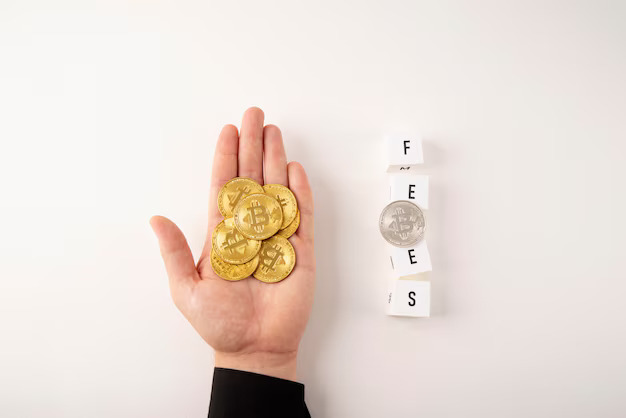Understanding the Importance of Discord Verification System

Understanding the Importance of Discord Verification System
In today’s digital landscape, maintaining a protected environment for members is of utmost importance. As communities continue to expand and interact through various platforms, the need for effective methods to confirm the identity of participants has become paramount. Establishing protocols that foster trustworthy interactions can significantly enhance the overall experience for users.
Implementing methods for member authentication not only helps in warding off unwanted intrusions but also cultivates a sense of safety among users. By employing specific strategies, community leaders can ensure that interactions remain respectful and free from disruptive elements. This approach ultimately leads to a more enjoyable atmosphere for everyone involved.
Throughout this exploration, we will delve into essential practices that can be utilized to fortify the integrity of online gatherings. By understanding these processes, participants can confidently engage in discussions, share ideas, and develop connections without the fear of encountering malicious intentions.
Understanding Discord Verification Levels
Ensuring the safety and integrity of an online community is essential for fostering a positive environment. Users and administrators must navigate various measures that provide different degrees of scrutiny before allowing access. Each level serves a distinct purpose, establishing protocols designed to create a welcoming atmosphere while minimizing potential risks.
The Importance of Different Levels
The varying tiers of scrutiny allow community leaders to tailor their approach based on the needs and dynamics of their group. Some may opt for minimal checks to encourage inclusivity, while others may choose stricter protocols to safeguard against disruptive elements. Understanding these distinctions helps participants appreciate the underlying rationale behind access restrictions.
Overview of Tiers
Different classifications often include aspects such as account age, the requirement for a verified email address, or even the necessity of two-factor authentication. Each of these contributes to a more secure environment, progressively filtering access based on reliability and trustworthiness. Participants can engage with confidence, knowing that precautions are in place to protect both personal information and community standards.
Benefits of Server Verification for Members
Ensuring a secure and trustworthy online community provides numerous advantages for participants. When a platform implements a method to validate its users, it fosters an environment where individuals can engage with confidence, knowing that their interactions are with genuine members.
Enhanced Security: One of the primary benefits is the increased protection against malicious activities. By confirming identities, the likelihood of encountering trolls or harmful actors significantly diminishes, allowing for a more pleasant experience.
Fostering Community Trust: When members undergo a process to establish their credibility, it cultivates a sense of reliability within the community. Participants are more inclined to share their thoughts and ideas when they feel secure in their surroundings.
Improved Interaction Quality: Verified individuals often lead to richer discussions and higher quality exchanges. With assurance that others are who they claim to be, members can engage more openly and constructively.
Reduced Spam: A rigorous approach to confirming participants curtails the presence of bots and spammers. This leads to cleaner conversations, making it easier for genuine members to connect and collaborate.
Exclusive Content and Opportunities: Many platforms offer exclusive benefits to validated users, such as access to special channels or events. This not only incentivizes the verification process but also enriches members’ experiences.
In summary, the process of confirming users brings a multitude of advantages that enhance overall satisfaction, safety, and engagement in the community, creating a thriving environment for all.
How to Setup Verification on Your Server
Establishing a method for ensuring the legitimacy of your community members is essential for maintaining a healthy and secure environment. This process allows you to filter out unwanted participants while ensuring a more enjoyable experience for your users.
Here are the steps to implement a robust authentication mechanism:
- Create Role for Verified Members:
Start by making a specific role for users who have completed the authentication process.
- Adjust Server Settings:
- Navigate to your settings and find the section dedicated to roles.
- Assign privileges linked to the newly created role, granting access to different channels accordingly.
- Choose Verification Method:
- Enable a simple reaction-based system where new users react to a post to gain access.
- Utilize bots that offer a challenge-response mechanism, such as CAPTCHA.
- Implement a questionnaire that users must complete before gaining entry.
- Communicate Expectations Clearly:
Post clear instructions in a dedicated channel about how to verify their status, ensuring everyone understands the process.
- Test the Setup:
Before fully launching the mechanism, conduct tests with a small group to ensure everything works smoothly.
Adopting these steps can significantly bolster the integrity of your community, making it safer and more welcoming for trustworthy members.
Common Verification Methods Explained
Ensuring that community members are genuinely who they claim to be is crucial in any online environment. Various strategies have been developed to authenticate participants and mitigate risks associated with unauthorized access or malicious intent. Below are some prevalent approaches employed in numerous online platforms.
Email Confirmation
This classic method leverages the user’s email address to establish identity. Upon registration, a confirmation link is sent to the provided email, requiring the individual to click on it to validate their account.
- Reliable and widely recognized.
- Helps in reducing fake accounts.
- Can serve as a recovery option for lost passwords.
Two-Factor Authentication (2FA)
This enhanced layer of security necessitates not only a password but also a second form of verification, typically a code sent to a mobile device. This technique significantly strengthens security by requiring physical access to a trusted device.
- Increases account protection against unauthorized access.
- Utilizes apps or SMS for sending codes.
- Reduces risks even if password information is compromised.
By employing these methods, online communities can foster a safer environment and protect their members from potential threats posed by malicious individuals.
Handling Verification Issues and Errors
In the realm of online communities, ensuring a smooth process for user authentication can sometimes lead to unexpected challenges. When participants encounter problems during the identification phase, it can result in frustration and confusion. This section covers some common hurdles and how to effectively address them, ensuring a seamless experience for all users involved.
Common Problems: Users may experience a variety of obstacles, including issues with links, inability to receive confirmation codes, or incorrect entries during the authentication steps. In many cases, these complications can be traced back to user error, network issues, or even temporary service disruptions.
Troubleshooting Steps: First, it’s essential to double-check the information provided during the registration process, ensuring that no typos or mistakes have occurred. If a confirmation link has not arrived, users should inspect their spam or junk folders, as important messages can sometimes be misdirected. Additionally, refreshing the browser or restarting the application may resolve temporary glitches.
Tech Support: If problems persist, reaching out to the support team of the community platform is recommended. Providing clear details about the issue can help expedite the resolution process. Often, support staff can offer insights or fixes that users may not have considered.
Staying Updated: Following community announcements or status updates can also be beneficial. Knowing about ongoing issues or maintenance can help users understand and anticipate potential delays in authentication procedures.
By taking these steps to navigate and resolve complications, users can enhance their experience and gain access to the community they wish to join.
Enhancing Security Beyond Basic Verification
In an era where online interactions are predominant, ensuring a robust safety framework is crucial. Beyond initial checks, there are various strategies to strengthen the protection of communities. Implementing advanced measures can significantly mitigate risks associated with unauthorized access and maintain a secure environment for all members.
Multi-Factor Authentication
Employing multi-factor authentication (MFA) creates an additional layer of security. By requiring users to confirm their identity through multiple avenues, such as a password combined with a one-time code sent to their mobile device, the likelihood of unauthorized access diminishes substantially. This method not only enhances security but also instills confidence among community participants.
Regular Audits and Monitoring
Conducting regular audits allows administrators to assess the integrity of their community’s safety measures. By periodically reviewing access logs and user activities, potential threats can be identified early. Establishing a routine monitoring system ensures that any abnormal behavior is quickly addressed, further reinforcing a secure environment for everyone involved. Employing these measures guarantees a comprehensive approach to safeguarding your online community.
Question-answer: Discord verification
What are the main reasons for verifying users on a Discord server?
Verifying users on a Discord server serves several important purposes. Firstly, it helps maintain a safe and secure environment by limiting access to trusted individuals. This reduces the risk of spam, trolling, and other negative behaviors that can disrupt the community. Additionally, verification can help weed out malicious actors who may try to infiltrate the server for phishing or harassment purposes. Lastly, verified roles can create a sense of belonging and commitment among users, encouraging more active and meaningful participation in the server.
What steps should I take to set up verification on my Discord server?
To set up verification on your Discord server, follow these steps: 1. Open your Discord server and navigate to ‘Server Settings’. 2. Click on the ‘Moderation’ tab. 3. Here, you’ll find options for ‘Verification Level’. You can choose from different levels, including ‘None’, ‘Low’, ‘Medium’, ‘High’, and ‘Highest’, depending on how strict you want to be. 4. After selecting a level, consider adding a ‘Welcome Channel’ where new members can read the rules and understand the verification process. 5. You might also want to create a ‘Verification Role’ that grants access only to verified users. 6. Be sure to communicate the verification process clearly to your users through your server’s rules or announcements channel. Adjust the settings according to the nature of your community to strike a balance between security and accessibility.
How does the verification process work for new users?
The verification process for new users typically involves a few steps that can vary based on the server’s chosen verification level. At the most basic level (‘None’), users can join and chat immediately. However, in a more strict setup (‘Medium’ or above), users may have to perform specific actions such as passing a CAPTCHA test, linking their Discord account to a social media account, or confirming that they have read the server rules. After completing these steps, they will be granted access to the server roles that allow them to participate in chat channels. For added security, some servers require users to wait a set period before they can access certain channels or features, ensuring that only committed and safe members are active.
Can members get verified in a specific way, or is it purely automated?
The verification process can be both automated and manual, depending on how a server owner chooses to set it up. Some Discord servers utilize bots that automatically verify users based on specific criteria, such as account age or activity levels. These bots can streamline the process, ensuring that only users who meet certain standards get verified. On the other hand, some servers may require manual verification, where moderators or admins assess new members and decide on granting access based on their discretion. This can be helpful in more niche communities where personal interaction is valued. In many cases, a combination of both automated and manual verification processes is used to optimize security and community engagement.
How can I verify my account using the Discord verification system?
To verify your account using the Discord verification system, you will need to follow the verification prompt sent to your email address or phone number. Once you receive the verification message, follow the instructions to complete the process.
What should I do if I encounter issues with the Discord verification system?
If you’re running into issues with the Discord verification system, please reach out to our support team for assistance. They can help resolve any problems related to verification and guide you through the necessary steps.
How can I set up the Discord verification bot for my server?
To set up the Discord verification bot for your server, you’ll need to invite the bot to your server and configure it according to the tutorial provided. Follow the instructions in the FAQ and related articles for detailed steps.
What steps are involved in configuring a custom verification system on Discord?
Configuring a custom verification system on Discord involves selecting the channel you want to use for verification, setting up the verification bot, and managing server permissions. You’ll also need to choose the button text and configure reaction roles as per your workflow.
How do I manage server permissions to enable verification?
To manage server permissions for verification, go to your server settings and adjust the permissions for roles and channels. Ensure that the verification bot has the necessary permissions to operate and that the member role is correctly set up.
What is the role of the verification system in moderating a Discord server?
The verification system helps in moderating a Discord server by ensuring that only verified members can access certain channels or features. This process helps prevent spam and maintains the quality of interactions within the server.
How can I use the Discord verification bot to streamline the verification process?
Using the Discord verification bot can streamline the verification process by automating the steps required to verify members. You can configure the bot to send verification prompts, manage responses, and assign roles automatically.
What should I do if a member can’t find the verification button?
If a member can’t find the verification button, ensure that they have the necessary permissions and check if the button is correctly configured in the verification channel. They may also need to refresh the page or check the server settings.
How can I unlock additional features or roles for verified members?
To unlock additional features or roles for verified members, configure the Discord verification system to assign specific roles upon successful verification. You may need to use reaction roles or other settings to provide access to these features.
What is the next step after verifying your Discord account?
After verifying your Discord account, the next step is to configure your server’s settings according to your preferences. This includes setting up roles, permissions, and any additional security measures you wish to implement.


